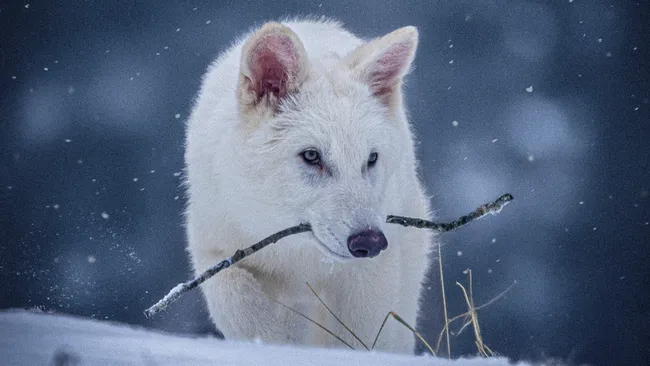Scientists recently revealed that they have “brought back” extinct dire wolves thanks to genetic engineering — but experts say the newly created animals are only like dire wolves in appearance.
Colossal’s “Dire Wolf Resurrection” Isn’t Quite What It Seems — But It’s Still Wildly Impressive
On April 7, biotech company Colossal Biosciences made a splashy announcement: they’d successfully “brought back” the long-extinct dire wolf using genetic engineering. Cue headlines, dramatic Game of Thrones flashbacks, and images of three striking white pups — Romulus, Remus, and Khaleesi — being hailed as the world’s first true de-extinction.
But while the news has stirred excitement, many experts are calling for a serious reality check. The truth is both less dramatic — and more fascinating — than the marketing would have you believe.
❌ Not a Dire Wolf — ✅ A Genetically Modified Gray Wolf
Let’s clear something up: these are not actual dire wolves.
“They’ve created gray wolves with some dire wolf traits, not true dire wolves,” said paleogeneticist Nic Rawlence. That’s because dire wolves (Aenocyon dirus) are not just an old version of modern wolves — they’re a completely different genus, more distantly related than previously thought. They diverged from today’s wolves around 6 million years ago.
“The African jackal might be more closely related to dire wolves than gray wolves are,” said zoologist Philip Seddon.
So how did Colossal do it?
🧬 How They Engineered These “Not-Quite-Dire” Pups
Colossal:
- Extracted ancient DNA from two dire wolf fossils, one 13,000 years old and another 72,000 years old.
- Reconstructed a partial dire wolf genome.
- Compared it to genomes of modern canids (wolves, jackals, foxes).
- Used gray wolves as the closest viable match to hold and express the dire wolf-inspired genes.
- Made 20 edits across 14 genes using CRISPR, aiming to recreate dire wolf characteristics (likely things like coat color, body shape, skull structure).
- Implanted embryos into domestic dogs, a subspecies of gray wolf.
The result? Pups that look dire wolf-ish but are biologically closer to modern wolves.
🐾 Meet the Pups: Romulus, Remus, and Khaleesi
Born between October 2024 and January 2025, these three pups are now healthy juveniles living under human care in a private preserve.
Their enclosure is fortified with 10-foot fencing, and the wolves are monitored continuously.
Will they ever be released into the wild? Unlikely.
“They will live out their life in a luxurious preserve under human care,” said Bridgett vonHoldt, a Princeton evolutionary biologist working with Colossal.
Experts warn that reintroducing animals with such uncertain behavior and health could be disastrous — not only for the animals but for ecosystems and public opinion.
🐐 Wait — Wasn’t There a “First” De-Extinction Already?
Yes! In 2003, Spanish scientists briefly resurrected the extinct Pyrenean ibex, a type of wild goat. The clone was born — and died seven minutes later. So technically, that was the first de-extinction, though it didn’t last long.
🌍 What’s the Point Then?
Colossal’s announcement may not signal a real-life Jurassic Park, but it does represent a massive leap in biotech and conservation. The tools developed to mimic dire wolves are already being used to help save the endangered red wolf (Canis rufus). Two cloned litters were recently born, giving a critical boost to this disappearing species.
So while “de-extincting” dire wolves may still be a dream (or a PR tactic), reviving endangered species is becoming a tangible reality.
🔬 Final Verdict?
Is this a dire wolf? Nope.
Is it cool science? Absolutely.
Is it helpful to wildlife conservation? Potentially game-changing.
As Seddon put it:
“We have GMO wolves, and might one day have GMO Asian elephants — but for now, extinction really is forever.”
Still, if you hear howls in the night… maybe double-check your Game of Thrones rewatch schedule.
